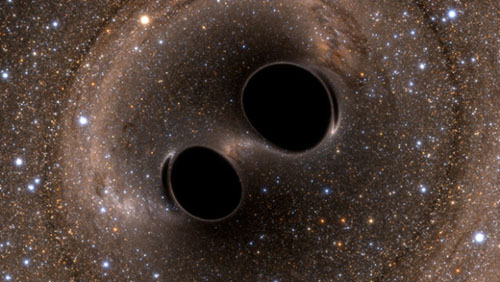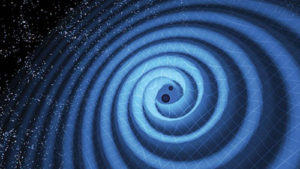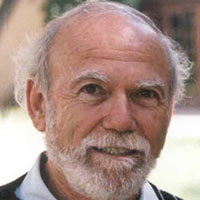Sunday, July 24, 5 p.m., Orcas Center
— from Michael Riordan —
 A long, long time ago in a galaxy far, far away, two massive black holes met and merged into a much bigger one, releasing more energy in the blink of an eye than do a trillion suns. Spacetime shuddered.
A long, long time ago in a galaxy far, far away, two massive black holes met and merged into a much bigger one, releasing more energy in the blink of an eye than do a trillion suns. Spacetime shuddered.
Over a billion years later, gravity waves rippling out through the Universe at the speed of light finally reached Earth, stretching it ever so slightly in one dimension while squeezing it in another. Two ultrasensitive detectors called “laser interferometers,” one at the Pacific Northwest Laboratory in Eastern Washington and the other in Louisiana, simultaneously detected this faint spacetime vibration in September 2015, triggering what promises to become a revolution in modern physics.
 On Sunday, July 24, Caltech Professor of Physics Barry Barish will recount this spectacular scientific discovery in an Orcas Currents lecture titled “Gravity’s Music: Einstein, Black Holes and Cosmic Chirps.” Open to the public, it will begin at 5 pm in Orcas Center. Admission is free, but donations are welcome.
On Sunday, July 24, Caltech Professor of Physics Barry Barish will recount this spectacular scientific discovery in an Orcas Currents lecture titled “Gravity’s Music: Einstein, Black Holes and Cosmic Chirps.” Open to the public, it will begin at 5 pm in Orcas Center. Admission is free, but donations are welcome.
A high-energy physicist by training, Barish is a leader of the international LIGO Experiment that detected these waves, having served as the Principal Investigator and Founding Director of the LIGO Laboratory. He is widely credited as the manager who got these sprawling, L-shaped facilities built — each arm stretching four kilometers — enabling the discovery to occur. Listeners will get a ring-side seat on this discovery.
**If you are reading theOrcasonian for free, thank your fellow islanders. If you would like to support theOrcasonian CLICK HERE to set your modestly-priced, voluntary subscription. Otherwise, no worries; we’re happy to share with you.**








